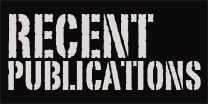



High in the Andes, Keeping an Incan Mystery Alive
By Simon Romero
SAN CRISTÓBAL DE RAPAZ, Peru — The route to this village 13,000 feet above sea level runs from the desert coast up hairpin bends, delivering the mix of exhilaration and terror that Andean roads often provide. Condors soar above mist-shrouded crags. Quechua-speaking herders squint at strangers who arrive gasping in the thin air. CONTINUE READING
multimedia piece: Mysteries Woven Into Peru's Past










